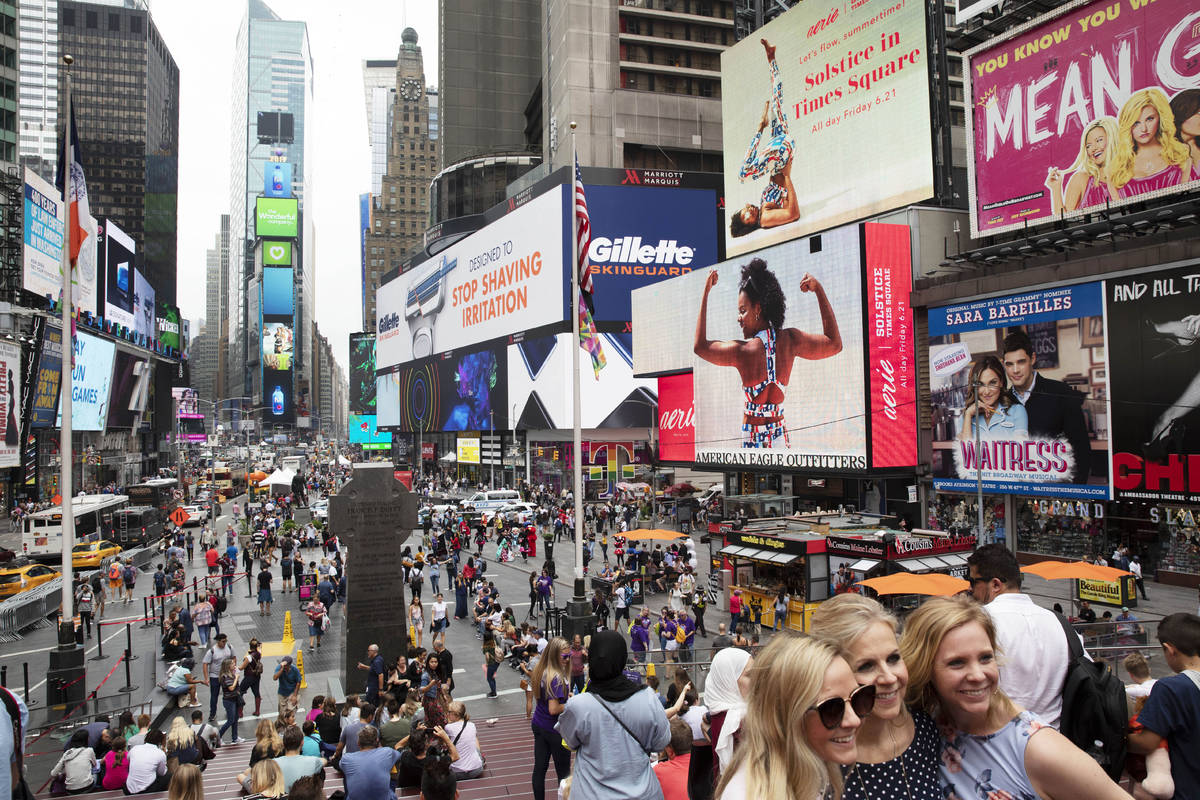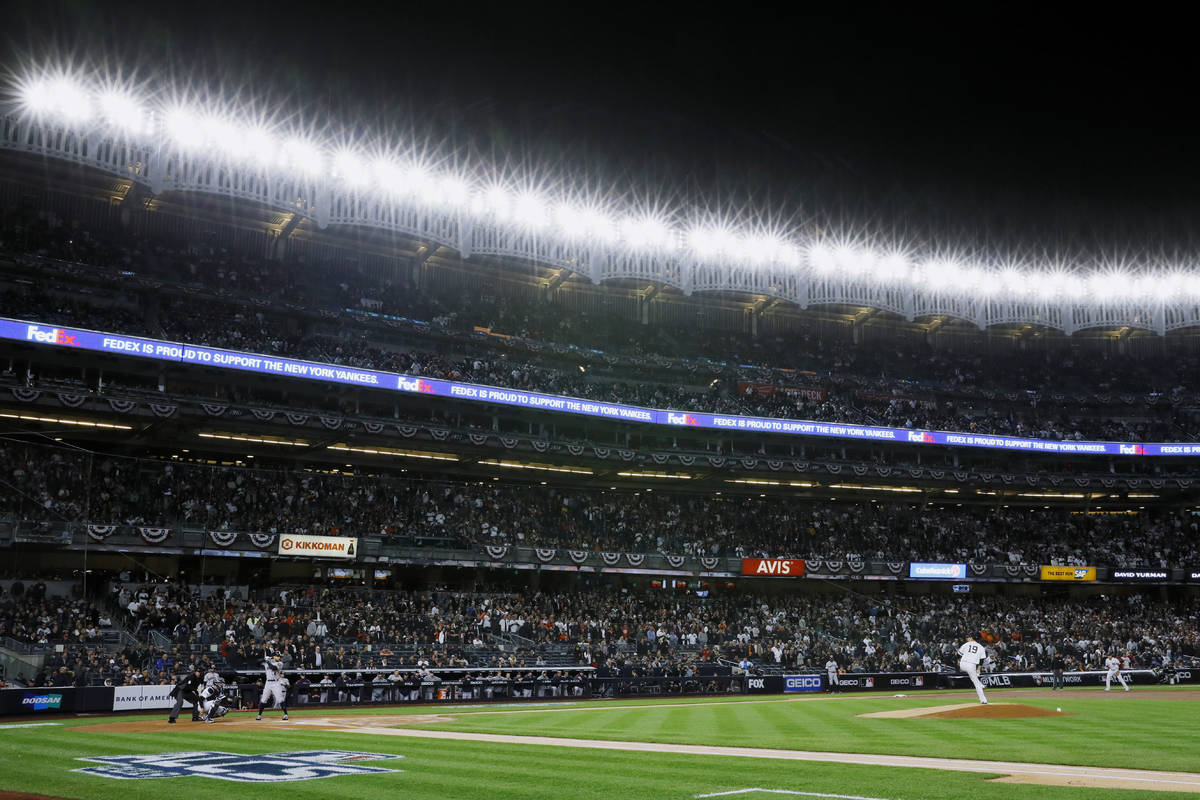New York reopening tests city torn by crises
NEW YORK — Scarred by the deadliest coronavirus outbreak in the nation, New York City gradually began reopening Monday in a turning point in the three-month-long crisis and an important test of the city’s discipline.
With the virus in check — at least for now — stores previously deemed nonessential were cleared to reopen for delivery and curbside pickup, though customers cannot yet browse inside. Construction, manufacturing and wholesalers also received the go-ahead to resume work.
“So far, so good,” construction management company owner Frank Sciame said as job sites started humming again, with new precautions such as health screening questionnaires and lower limits on the number of workers allowed in construction hoists. “Let’s hope it continues.”
Midtown Manhattan cautiously reawakened, with some luxury stores still boarded up after a few nights of smash-and-grab thefts amid last week’s protests over George Floyd’s death. But other shops began pulling plywood off their windows and restocking.
Mayor’s prediction
“This is the place where it was going to be the hardest to make a comeback, and yet New York City is so strong and resilient, we are making that comeback,” Mayor Bill de Blasio said.
But he warned the city against letting its guard down and jeopardizing its hard-won progress against the virus: “Let’s hold onto it. Let’s build on it.”
Unrest over racism and police brutality could compound the challenges facing the nation’s biggest city as it tries to move past three bleak months. Officials who had focused for months on public health and economic woes are now also facing urgent pressure for police reform.
New York became the epicenter of the U.S. coronavirus outbreak, with more than 21,000 people dying citywide of confirmed or probable COVID-19. That is roughly 1 in 5 of the 110,000 coronavirus deaths across the U.S.
500+ deaths a day now single digits
At its peak, the scourge killed more than 500 people a day in New York City in early to mid-April. The number has dropped into the single digits.
The number of people testing positive for the virus was down to 200 to 300 per day at the start of last week, compared with more than 6,000 a day in early April.
The risk is that the reopening of the economy will lead to a resurgence of the virus.
“All eyes will be on New York this next couple of months,” said urban policy expert Jonathan Bowles, executive director of the Center for an Urban Future. “The city now has to prove that it really knows what it’s doing, that it can still be a dense city like New York and yet figure this out.”
Gov. Andrew Cuomo took a subway ride to mark the moment and send a message that it’s safe: “If they’re using the sanitizer, they’re using the masks, it will be OK.”
Edwin Arce said he thinks the city can regroup. A chef at a Manhattan restaurant, he was heartened to see more customers than expected when it reopened for takeout and delivery.
“As a city, we are ready to be back, start going out, living life — with the new reality, though,” of masks and 6-foot (2-meter) separation, said Arce, 31.
May never be like it was
Sam Solomon wonders how normal that will be.
“I don’t know if it’s ever going to be like it was,” said Solomon, 22, who has a health-related job. After months of relative isolation, “it’s going to be an adjustment being around so many people,” said the native New Yorker, who never thought she would have to get used to crowds.
Around the world, the coronavirus has killed more than 400,000 people, with the toll rising by thousands every day. The virus is sill raging in places like Brazil, which over the weekend stopped reporting its death toll. Its official count stood at more than 34,000, giving Brazil the third-highest number of dead in the world, behind the U.S. and Britain.
New York City, population 8.3 million, has already reawakened somewhat as warm weather drew people outdoors, more restaurants offered carryout service, and thousands of people marched in protest over Floyd’s death at the hands of Minneapolis police.
Subway busier
Subway ridership is ticking back up after plunging from 5.4 million rides per weekday in February to under 450,000 in April, the city’s transit agency says. Subway schedules are returning to normal, though there are signs showing riders how far apart to stand on platforms, and the 1 a.m.-to-5 a.m. shutdowns that began in May will continue so trains can be cleaned.
Many activities, such as indoor dining and gym workouts, aren’t yet allowed, Broadway theaters and other big venues remain shuttered, and New Yorkers are still required to wear face masks when close to others in public.
Experts say reviving the economy will hinge on people’s willingness to shop, eat out and more. But as the city tries to recover economically, will the virus strike back?
“It’s going to be a big test,” said Dr. Bruce Polsky, a city resident who is chairman of medicine at NYU Winthrop Hospital in suburban Mineola.
Months of social distancing, mask-wearing, hand-washing, shock and fear have made New Yorkers better prepared to keep the coronavirus under control, health experts said. But there are also fears that the protests over Floyd’s May 25 death will result in a second wave of infections.


















